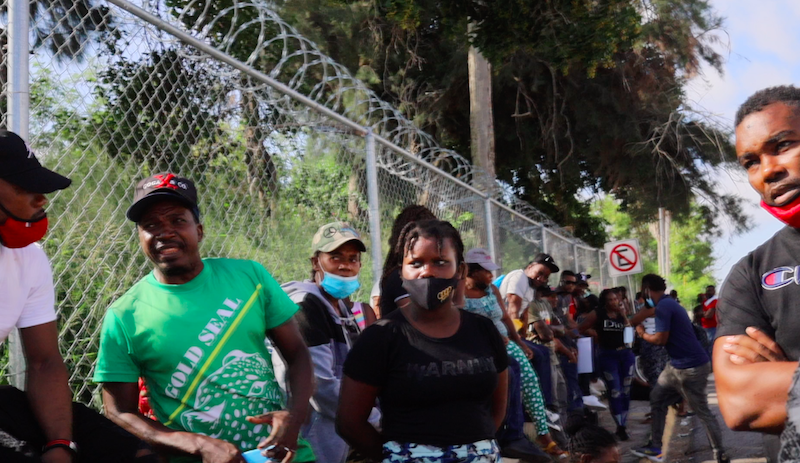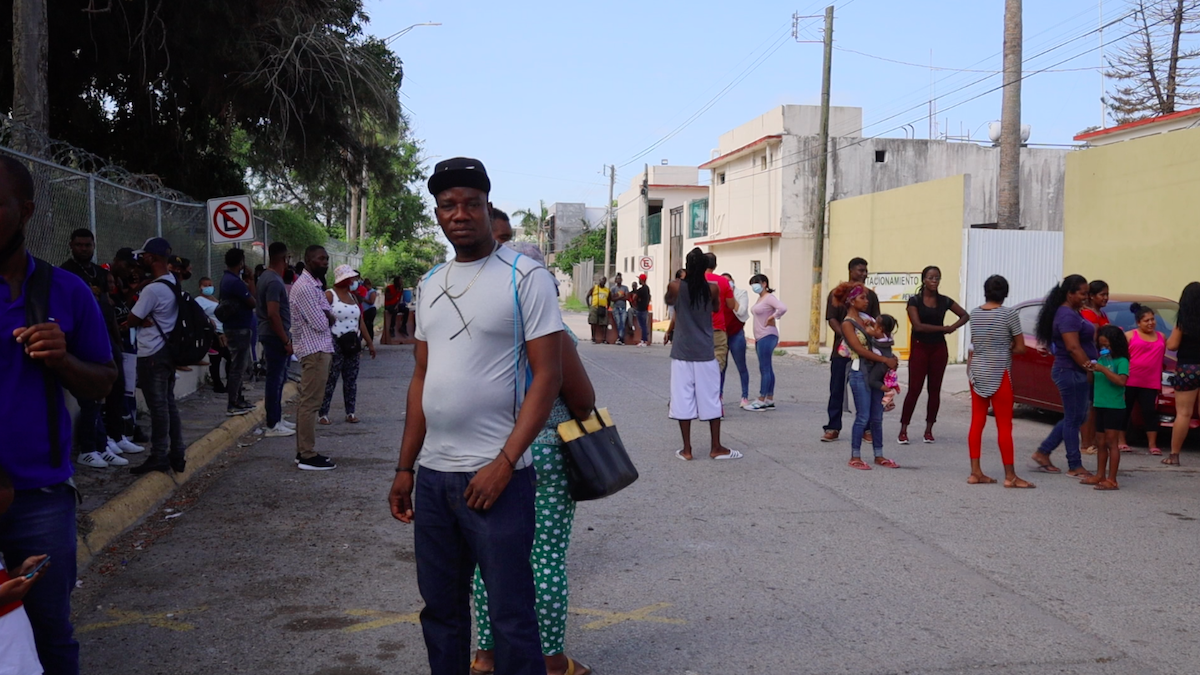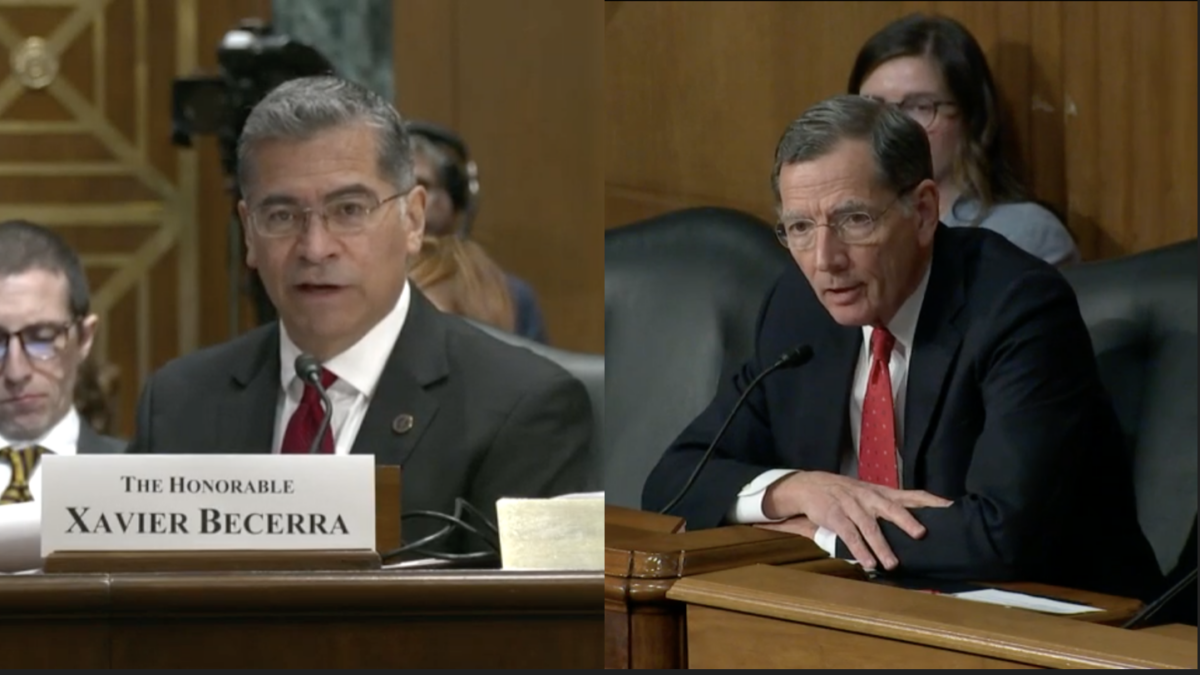MATAMOROS, Mexico — It’s easy to find gut-wrenching stories at the border. Ask almost any migrant you meet in northern Mexico and you’ll hear about the violence and hardships they endured to get as far as they have.
Alba Luz Perdomo, for example, fled Honduras with her husband and 13-year-old daughter after a gang killed her brother and threatened to kill them too. But that was just the beginning of their troubles.
They were forced to leave a farm where they had been working in the southern Mexican state of Tabasco by locals who told them foreigners weren’t welcome. In Monterrey, Perdomo’s daughter was nearly abducted by their landlord. They sought help from a man claiming to be a pastor in Matamoros, but who turned out to be a human trafficker and kept the family in his house for 20 days before they managed to escape.
Now they’re living in a migrant shelter in Matamoros, just across the river from Brownsville, Texas. But they’re afraid to leave the walled compound of the shelter because the local cartel keeps trying to recruit her husband. Perdomo says she doesn’t want to cross the border illegally, but doesn’t know what to do. “I’m asking God to do something,” she says, “because this is horrible.”

It’s impossible not to feel sympathy for this woman and her family. Their story is shockingly commonplace among migrants stuck in Mexican border towns like Matamoros and Reynosa, where I recently traveled with a pair of colleagues, Emily Jashinsky and David Agren, to better understand the ongoing border crisis. (Read part one of this series here.)
But too often, sympathetically conveying these stories — many of which are impossible to verify — is the extent of the media’s coverage of the crisis. It makes for a compelling read and, especially when President Donald Trump was in office, a just-so morality tale complete with villains and victims and a heroic struggle for justice. For left-leaning reporters, it confirms all their prior assumptions about the anti-immigrant bigotry of Trump and his supporters, and the bravery and nobility of the migrants (and, by extension, of themselves).
Of course, such biased coverage has the effect of obscuring the causes of the crisis and clouding our understanding of how it’s playing out. But looking beyond the personal stories of hardship and suffering we usually see in the corporate press — and beyond the outrage-driven coverage we often see in conservative media — we can discern the outlines of an entire black market industry around illegal immigration that’s been created and sustained by U.S. border policy, which cartels and smugglers are using to enrich themselves at the expense of migrants and the American people alike.
Consider the story of Ramon and his wife Veronica and their two-year-old daughter. They left Nicaragua, Ramon told us, because of poverty. We spoke to them on a recent weekday afternoon at the Catholic Charities Humanitarian Respite Center in McAllen, Texas, where U.S. Immigration and Customs Enforcement drops off nearly everyone it discharges from federal custody in that area. They had just been released that morning along with about 70 others.
Their story, like many others on the border, is terrifying. When Ramon and Veronica and their daughter reached Reynosa, their bus was stopped at a cartel checkpoint and they were asked for a code. (When migrants pay off the cartel they get a code. That’s how the cartel keeps track of who’s paid and who hasn’t.)
They hadn’t paid and didn’t have a code, so the cartel kidnapped them and took them to a stash house with a bunch of other families. Ramon says the house had no water, no food, no electricity. They were held there 10 days, until family members back in Nicaragua were able to get together $3,000 (a thousand for each of them) and pay the “cartel tax.”

After they paid, they were taken over the river by boat, picked up by Border Patrol, and were released a few days later on humanitarian parole. In this case, they were released on parole through a relatively recent bureaucratic innovation designed to streamline the processing of illegal border-crossers and prevent overcrowding in federal detention centers.
They say they were only asked for the address and telephone number of their destination. ICE discharged them with a sheaf of documents that allows them to travel inside the United States — which they’ll need to do, because they were also given a date, 30 days out, to report to an ICE office in central Washington State, where they’re headed.
What they don’t have is a court date or work permits. For whatever reason, their parole documents, which they showed us, did not include a work authorization number. This concerned them greatly, as it did most everyone we spoke with at the Respite Center who didn’t have work authorization.
The irony is that Ramon and Veronica, if their story is true, might actually have a compelling case for political asylum. But they seemed far less concerned with filing an asylum claim than with getting a hold of work permits.
The two are in fact connected. If you successfully file an asylum claim, you also get authorization to work in the United States while the case runs its course, which, because immigration courts are so backlogged, now takes almost five years. This is one reason so many illegal immigrants arrested after crossing the border are claiming asylum. Even if they have no chance in court, they can work in the United States in the meantime and send money to their families back home. For many migrants, that’s the ultimate purpose of crossing the border in the first place.
But there are other ways to get authorization to work besides filing an asylum claim. We spoke to a group of Haitian men at the Respite Center who had all been released under a slightly different iteration of humanitarian parole. Their paperwork differed significantly from Ramon and Veronica’s. Not only did these men have authorization to work, they had court dates for removal proceedings that were months away, some more than a year. A staff member at the Respite Center told me she had seen court dates for removal proceedings (not asylum hearings) as far out as 2026.
The Border Has Become a Vast Criminal Enterprise
The bureaucratic morass these people are pulled into upon crossing the border is dizzying. Even for an American citizen and a native English speaker, it’s hard to follow. No wonder the reality of U.S. immigration policy gets distilled down to a few essentials on the south side of the Rio Grande.
What most migrants there believe is in fact the truth, more or less: if you can get across the Rio Grande, you will probably be allowed to stay. Under what conditions and for how long is not as important to them as crossing the border and getting released from U.S. custody, preferably with permission to work.
Because of this, smuggling networks and cartels are able to collect massive revenues from migrants, knowing that once inside the United States they will be able to earn far more than they could back home or in Mexico. That’s why, for example, the cartel that kidnapped Ramon and Veronica held them until family members back in Nicaragua came up with a cash payment of three thousand dollars.
Those family members no doubt went into debt with local loan sharks to come up with the money, as migrants’ families are often forced to do. But if Ramon and Veronica can get into the United States and start working, it will ultimately be worth it. For some migrants stuck in northern Mexico, failing to get into the United States isn’t an option; if they don’t get in and start working, their families back home will never be able to repay the loan sharks.

This is dynamic now all up and down the border. Indeed, it’s hard to overstate the extent to which illegal immigration has become an industrial-scale, international smuggling black market that operates according to these incentives.
In Matamoros, Pastor Abraham Barberi, who runs one of two migrant shelters in the city, told us that back in 2019, when some 3,000 migrants were concentrated in a sprawling encampment near the international bridge, the cartel came in and made every person there pay a tax. “The cartel made a lot of money off that,” Barberi told us. “A lot of money.”
The 54-year-old pastor has been working in Matamoros for more than 20 years, and personally knows many members of the cartel here, which he says “controls everything here now,” including the police and the municipal government. Even the predominantly Haitian migrant community, we were told, has been infiltrated by the cartel as a way of keeping track of newcomers. (As if to underscore the point, a few days after we left town the cartel imposed blockades along main roads in Matamoros and set fire to a bunch of vehicles, supposedly in retaliation for the arrest of a Gulf Cartel boss.)
“They know you’re here,” Barberi tells us at one point, but quickly adds that we’re safe, not to worry. “They won’t bother you because they don’t want trouble with the U.S. government, or any foreign governments.” He says the cartel leaves him and his shelter alone, not just because they know he’s doing good work but because he’s not trying to profit off the migrants in his care.
“If we were doing something illegal with the migrants, or we were charging them to stay here, collecting money, profiting from them, the cartel would be here in a heartbeat,” he says, snapping his fingers for emphasis. “They would want a part of it. But they know we’re not doing that. I have asked the coyotes [smugglers] please, don’t do business here, do it over there. And they respect that.”
At the same time, Barberi adds, when the cartel-affiliated smugglers want customers, they know where to find them. “In a sense, their business is right here. They don’t have to go around looking for them.”
It’s not just cartels in border towns that see migrants as potential “customers,” it’s also Mexican officials in the country’s interior. Miguel, a Salvadoran taxi driver who came to Reynosa with his wife and three kids, relayed a common story we heard from others in the shelters: that on the bus ride north, when they reached Monterrey, uniformed and armed federal agents boarded the bus and asked everyone for their papers. Miguel and his family had none, so the agents demanded payment.
Variations of this story are common. Sometimes it’s not federal agents but state police or cartel gunmen. What emerges, though, is a picture of official corruption at every level of Mexican society that enables hundreds of thousands of migrants to transit through Mexico each month and arrive at the U.S.-Mexico border. It’s a massive and lucrative business.
Every aspect of illegal immigration has been monetized, including information — and often outright misinformation. Barberi told us he found out recently that his name, address, and phone number were being sold for a thousand dollars in Central and South America by people claiming that if migrants could just get to Barberi’s shelter in Matamoros, he would take them across the border.
Now, Barberi tells arriving migrants right away that no one at his shelter is going to take anyone across the border. Often, he says, they also think there’s a list they can get on to get into the United States. Barberi tells them there is no list, it doesn’t exist. He says he wishes the U.S. government would make a video explaining all this and post it to social media, to deter people from coming. He has repeatedly asked the U.S. consulate to do this, to no avail.
But even if such a video or PR campaign existed, it would be going up against the personal testimony of hundreds of thousands of people who are crossing the border illegally and being released into the United States every month. There is nothing the Biden administration can say, no message it can send, that refutes the tangible results of its policies: people are getting in, and they are staying.
The Respite Center where we met Ramon and Veronica only allows migrants to stay 24 hours. Hundreds of people churn through there every day. Even those like Ramon and Veronica, who said they had no money left to travel to Washington state, will soon move on, somehow. Veronica told us they were “waiting to see what will happen,” that a friend in Washington might loan them the money for airfare, and that throughout their ordeal, “We have always trusted in an all-powerful God.”









